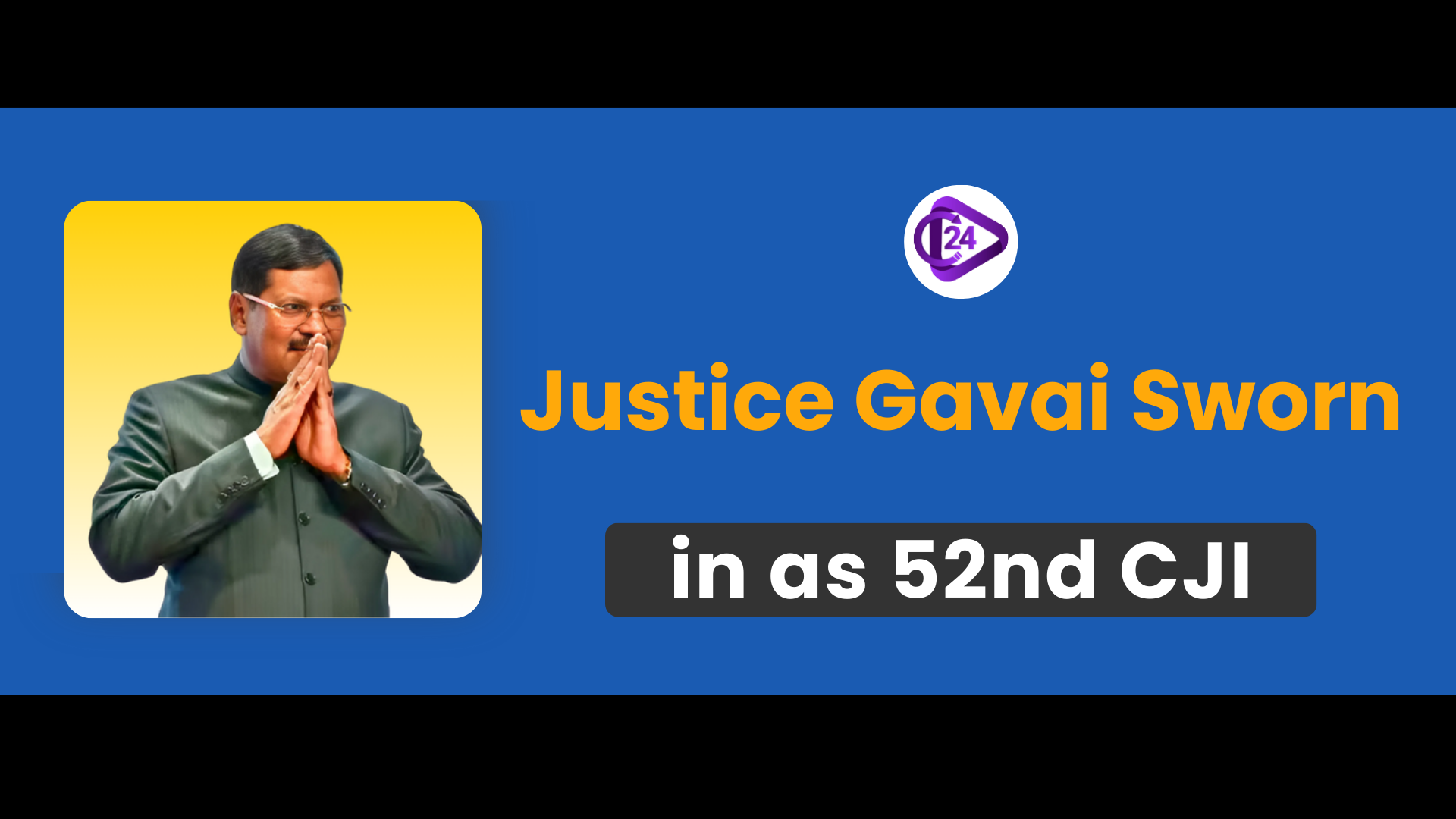
Justice Bhushan Ramkrishna Gavai was sworn in as the 52nd Chief Justice of India at a ceremony held at Rashtrapati Bhavan on May 14, 2025, and President Droupadi Murmu administered. He is the first Buddhist to occupy the office and is famous for his brave and firm judgments. During his term of office, there is an impending resolution of major constitutional issues such as challenges to the Places of Worship Act and the Waqf (Amendment) Act, 2025. Justice Gavai has good exposure to constitutional law with his contribution to several landmark decisions. His term will end on the 23rd of November 2025.
Context:
-
Justice B.R. Gavai was sworn in as the 52nd Chief Justice of India, a landmark position of being the first Buddhist to be appointed in the post with some expected effective term on constitutional issues.
Key Points
Swearing-in Ceremony:
-
A new Chief Justice of India (CJI) took office on the form of Justice Bhushan Ramkrishna Gavai.
-
The ceremony was held in Rashtrapati Bhavan by President Droupadi Murmu.
-
Chief Justice Gavai made his oath in the Hindi language and swore to maintain the Constitution.
Personal Background:
-
Justice Gavai comes from Amravati, Maharashtra.
-
Born on November 24, 1960.
-
Son of Ramakrishna Suryabhan Gavai, who ruled as the Governor of Bihar and was also a Dalit leader.
Professional Journey:
-
Began his career as a lawyer in the Nagpur Bench of the Bombay High Court in the year of 1987.
-
Appointed additional judge of the Bombay High Court in the year 2003.
-
Promoted to the post of a Permanent Judge in 2005.
-
On May 24, 2019, Upheld as a Supreme Court Judge.
Notable Judicial Contributions:
-
Sustained the nullification of Article 370 of the Constitution.
-
Provided verdicts on important matters like electoral bonds and the scheduling of caste classification.
-
Famous for his bold and judgmental verdict.
Challenges Ahead:
-
Will listen to objections on Places of Worship Act and the Waqf (Amendment) Act, 2025.
-
To be the main players and contributors to judicial discourse on constitutional issues.
Judicial Philosophy:
-
Has faith in judicial independence and proper discharge of duties.
-
Supporters of the preservation of the separation and independence of the judiciary.
Facts
-
Gavai’s term as the first Buddhist chief justice in India has symbolic importance.
-
His appointment is an indication of diversity and inclusivity of the Indian judiciary.
-
Due to his history of supporting the constitutional principles, his tenure is likely to be characterized by progressive legal interpretations.
Role and Functions
-
Head of the Judiciary of India
-
Chairs the Supreme Court in India
-
Designates Constitution Benches and divides work amongst the judiciary.
Appointment
-
Appointed by the President of India
-
The senior-most judge of the Supreme Court is usually appointed.
Tenure
-
Stays in office before reaching the age of 65 years.
-
Has the right to resign or can be sacked through impeachment procedure under article 124(4)
Removal Procedure
-
Started by either the House of Parliament
-
Needs the majority of the total membership and 2/3rd majority of the members present and voting.
-
On account of proven misbehavior or incapacity
First CJI of India
-
Harilal Jekisundas Kania (1950)
Significant Powers
-
The head of the administrative branch of the Supreme Court.
-
Proposes names for SC and HC judges’ appointment.
-
Plays a vital role in the judicial appointments through the collegium system.
Collegium System
-
Consists of the CJI and four top-most SC judges
-
Proposals for appointments and transfers of judges
Salary and Perks
-
Salary: Approximately ₹2.80 lakh per month
-
Perks: Residence, staff, and security, among others, are allowances.
Conclusion:
The selection of Bhushan Ramkrishna Gavai to be the Chief Justice of India highlights the judiciary’s recognition of diversity and aggressive legal interpretation. His tenure is likely to be characterised by firm decisions on vital constitutional questions, judicial autonomy, and adherence to democratic ideologies.



 Union Cabinet Approves ₹3,706 Crore HCL-Foxconn Semiconductor Plant in Jewar, Uttar Pradesh
Union Cabinet Approves ₹3,706 Crore HCL-Foxconn Semiconductor Plant in Jewar, Uttar Pradesh Indore has been declared India’s first beggar-free city
Indore has been declared India’s first beggar-free city Ajay Kumar, a former Defence Secretary, has been appointed as UPSC Chairman
Ajay Kumar, a former Defence Secretary, has been appointed as UPSC Chairman Southwest Monsoon Arrives Early in Andaman; IMD Forecasts Above-Normal Rainfall
Southwest Monsoon Arrives Early in Andaman; IMD Forecasts Above-Normal Rainfall PM Modi stresses targeted interventions and technology to eliminate TB
PM Modi stresses targeted interventions and technology to eliminate TB Justice for Pahalgam: Three Terrorists Shot Down in Operation Keller In Jammu & Kashmir
Justice for Pahalgam: Three Terrorists Shot Down in Operation Keller In Jammu & Kashmir Niveshak Shivir Initiative: Empowering Investors to Reclaim Unclaimed Dividends and Shares
Niveshak Shivir Initiative: Empowering Investors to Reclaim Unclaimed Dividends and Shares Karnataka Government to invest 7000 cr in B-SMILE for infrastructure development
Karnataka Government to invest 7000 cr in B-SMILE for infrastructure development “Bharat Bodh Kendra” was inaugurated by Union Minister Manohar Lal in New Delhi
“Bharat Bodh Kendra” was inaugurated by Union Minister Manohar Lal in New Delhi






